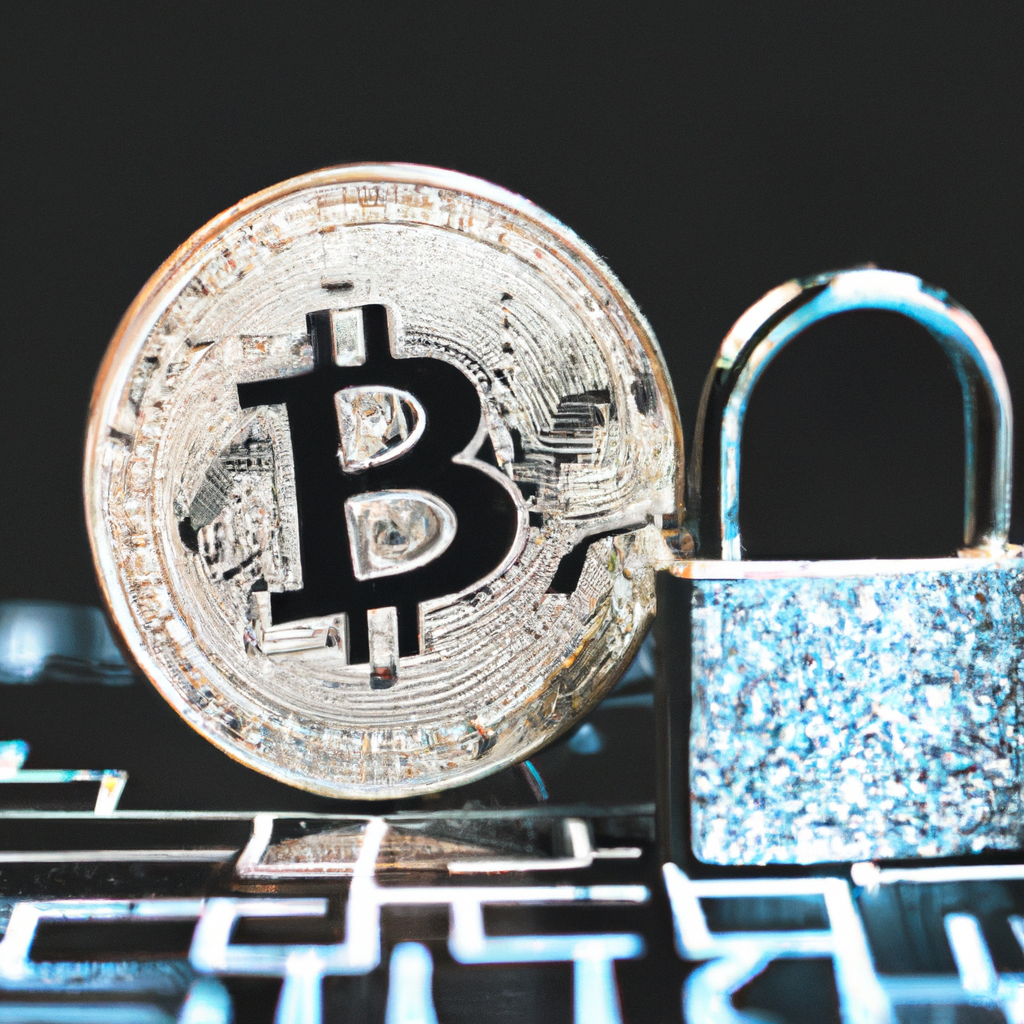Cryptocurrency has become an increasingly popular investment option in recent years. However, with the rise in popularity also comes a rise in potential security threats. Protecting your cryptocurrency portfolio is crucial to ensure your investments remain safe and secure. In this article, we will discuss tips and strategies for safeguarding your cryptocurrency holdings and minimizing your risk of theft or loss.
- 1. Introduction
- 1.1. Why protecting your cryptocurrency portfolio is important
- 1.2. The risks involved in holding cryptocurrencies
- 1.3. The importance of having a secure storage solution
- 2. Best Practices for Protecting Your Cryptocurrency Portfolio
- 2.1. Use a hardware wallet
- 2.2. Create strong passwords and two-factor authentication
- 2.3. Be cautious of phishing attempts
- 2.4. Regularly update software and security settings
- 2.5. Diversify your holdings
- 3. Additional Tips to Protect Your Cryptocurrency Portfolio
1. Introduction
Cryptocurrency has emerged as a popular investment option in recent years. With the rise of Bitcoin and other cryptocurrencies, investors have been flocking to this market to try and make a profit. However, with great potential rewards come great risks. Protecting your cryptocurrency portfolio should be a top priority for any investor. In this article, we will explore some tips and strategies for safeguarding your investment and securing your financial future.
1.1. Why protecting your cryptocurrency portfolio is important
Cryptocurrency is quickly becoming a popular investment option for individuals looking to diversify their portfolio. However, with the rise of cryptocurrency comes the need to protect your investments. With the decentralized and unregulated nature of cryptocurrencies, investors must take extra precautions to ensure the safety of their assets. In this article, we will explore the importance of protecting your cryptocurrency portfolio and provide tips and strategies to help you safeguard your investments.
1.2. The risks involved in holding cryptocurrencies
Cryptocurrencies have become increasingly popular over the years, with many investors choosing to hold digital assets as part of their investment portfolios. While cryptocurrencies offer the potential for high returns, there are also risks involved in holding these volatile assets. One of the biggest risks is the potential for hacking and theft, as cryptocurrencies are stored in digital wallets that can be vulnerable to cyber attacks. Additionally, the value of cryptocurrencies can be highly volatile, making them susceptible to market fluctuations and sudden price drops. As such, it is important for investors to take steps to protect their cryptocurrency portfolios and minimize these risks.
1.3. The importance of having a secure storage solution
With the rise of cryptocurrency, it’s more important than ever to have a secure storage solution. Cryptocurrency is a digital form of currency that is decentralized and operates independently of a central bank. This makes it vulnerable to hacking and theft. Without a secure storage solution, your cryptocurrency portfolio could be at risk. In this article, we will discuss the importance of having a secure storage solution for your cryptocurrency portfolio and provide tips and strategies to protect it.
2. Best Practices for Protecting Your Cryptocurrency Portfolio
Protecting your cryptocurrency portfolio is crucial, especially in the volatile and unpredictable world of cryptocurrency. Here are some best practices to keep your portfolio safe:
1. Use a Hardware Wallet: A hardware wallet is a physical device that stores your private keys offline, making it less vulnerable to hacking and cyber attacks.
2. Enable Two-Factor Authentication: Two-factor authentication adds an extra layer of security to your accounts by requiring a code from your phone or a security key in addition to your password.
3. Keep Your Private Keys Secure: Your private keys give you access to your cryptocurrency, so it’s important to keep them safe. Consider using a password manager or writing them down and storing them in a secure location.
4. Be Careful with Public Wi-Fi: Public Wi-Fi networks can be easily hacked, so it’s best to avoid using them when accessing your cryptocurrency accounts.
5. Stay Up-to-Date on Security Measures: As new threats and vulnerabilities emerge, it’s important to stay informed and updated on the latest security measures to keep your portfolio safe.
2.1. Use a hardware wallet
When it comes to protecting your cryptocurrency portfolio, one of the best practices is to use a hardware wallet. Hardware wallets are physical devices that store your private keys offline, making them much more secure than software wallets or online exchanges. By keeping your private keys offline, you reduce the risk of your cryptocurrency being stolen by hackers or other malicious actors. Additionally, hardware wallets often come with additional security features such as password protection and two-factor authentication, further increasing the security of your cryptocurrency holdings.
2.2. Create strong passwords and two-factor authentication
Creating strong passwords and using two-factor authentication are crucial steps in protecting your cryptocurrency portfolio. When creating a password, use a combination of uppercase and lowercase letters, numbers, and symbols to make it harder to guess. Avoid using easily guessable information such as your name, birthdate, or common words. It’s also important to never reuse passwords across multiple accounts.
Two-factor authentication adds an extra layer of security by requiring a second form of verification in addition to your password. This can include a code sent to your phone or a biometric scan. Make sure to enable two-factor authentication on all of your cryptocurrency accounts to prevent unauthorized access.
2.3. Be cautious of phishing attempts
Phishing attempts are a common threat to cryptocurrency holders. These attempts involve scammers sending fake emails or creating fake websites that mimic legitimate cryptocurrency exchanges or wallets. The goal is to steal login credentials or private keys, which would give the scammers access to the victim’s cryptocurrency holdings. To protect yourself from phishing attempts, always double-check the URL of any website you visit and be wary of unsolicited emails asking for personal information. Use two-factor authentication whenever possible and never share your private keys with anyone.
2.4. Regularly update software and security settings
Regularly updating your software and security settings is one of the best practices for protecting your cryptocurrency portfolio. This ensures that your devices and wallets are equipped with the latest security features and patches, reducing the risk of vulnerabilities and attacks. Make sure to enable automatic updates for your software and operating systems, and keep your antivirus and firewall software up-to-date. Additionally, consider using multi-factor authentication (MFA) and strong passwords to further enhance your security measures.
2.5. Diversify your holdings
Diversifying your holdings is one of the best practices for protecting your cryptocurrency portfolio. By investing in a variety of cryptocurrencies, you can reduce the risk of losing everything if one particular currency crashes. Diversification also enables you to take advantage of different market conditions and potential opportunities in various sectors. It’s important to research and select cryptocurrencies that have strong fundamentals and are expected to perform well in the long run. Additionally, consider investing in other asset classes, such as stocks or real estate, to further diversify your portfolio and reduce overall risk.
3. Additional Tips to Protect Your Cryptocurrency Portfolio
Aside from the strategies mentioned above, here are some additional tips to protect your cryptocurrency portfolio:
1. Use cold storage – Consider storing your cryptocurrency in a hardware wallet or paper wallet. This will keep your private keys offline and away from potential hackers.
2. Keep your private keys safe – Store your private keys in a secure location and never share them with anyone.
3. Be cautious of public Wi-Fi – Avoid accessing your cryptocurrency accounts or making transactions on public Wi-Fi networks, as they are often unsecured and vulnerable to hackers.
4. Keep your software up to date – Make sure to regularly update your cryptocurrency wallets and any other software related to your portfolio to ensure they are protected from any known security vulnerabilities.
5. Avoid phishing scams – Be wary of any emails or messages asking for your private keys or personal information. Always double-check the sender and never click on any suspicious links.
3.1. Avoid storing large amounts of cryptocurrency on exchanges
One important step in protecting your cryptocurrency portfolio is to avoid storing large amounts of cryptocurrency on exchanges. While exchanges can be a convenient way to buy, sell, and trade cryptocurrencies, they are not designed to be long-term storage solutions. Exchanges are vulnerable to hacks and security breaches, and if an exchange is compromised, your cryptocurrency could be lost forever. Instead, consider using a hardware wallet or a cold storage solution to store your cryptocurrency offline and away from potential hackers.
3.2. Keep your private keys secure
One of the most important aspects of protecting your cryptocurrency portfolio is keeping your private keys secure. Private keys are essentially the passwords that allow you to access and manage your cryptocurrency holdings. If someone gains access to your private keys, they can essentially take control of your entire portfolio. To keep your private keys secure, consider storing them offline in a hardware wallet or on a piece of paper that is kept in a secure location.
3.3. Consider using a VPN for added security
Using a VPN (Virtual Private Network) can add an extra layer of security to your cryptocurrency transactions. By encrypting your internet connection and hiding your IP address, a VPN can prevent hackers from intercepting your data and stealing your cryptocurrency. Additionally, using a VPN can help you bypass geo-restrictions and access cryptocurrency exchanges and wallets that may be blocked in your region. When choosing a VPN, look for one that has a no-logging policy and offers strong encryption.
3.4. Educate yourself on the latest security threats and best practices
As the world becomes more digital, protecting your cryptocurrency portfolio is becoming increasingly important. It is crucial to educate yourself on the latest security threats and best practices to ensure the safety of your investments. Stay up-to-date on the latest news and developments in cryptocurrency security to stay one step ahead of potential threats.
In addition to staying informed, there are a few additional tips you can use to protect your cryptocurrency portfolio. First, consider using a hardware wallet to store your coins. These wallets are not connected to the internet, making them less vulnerable to hacking attempts. Additionally, be sure to use two-factor authentication whenever possible and use unique, complex passwords for each of your accounts.
Another important step in protecting your portfolio is to use a reputable cryptocurrency exchange. Research the exchange thoroughly before using it and be wary of any exchange that seems too good to be true. Finally, consider spreading your investments across multiple cryptocurrencies and exchanges to minimize your risk.
3.5. Consider using a multi-signature wallet
One additional tip for protecting your cryptocurrency portfolio is to consider using a multi-signature wallet. This type of wallet requires multiple signatures or approvals before any transaction can be made, adding an extra layer of security to your funds. With a multi-signature wallet, you can set up a group of trusted individuals who must all approve any transactions, which can help prevent unauthorized access to your funds.
Conclusion
In conclusion, protecting your cryptocurrency portfolio is crucial in today’s digital age. By implementing the tips and strategies discussed in this article, you can safeguard your investments from potential threats. Remember to stay informed, stay vigilant, and never compromise on security.





